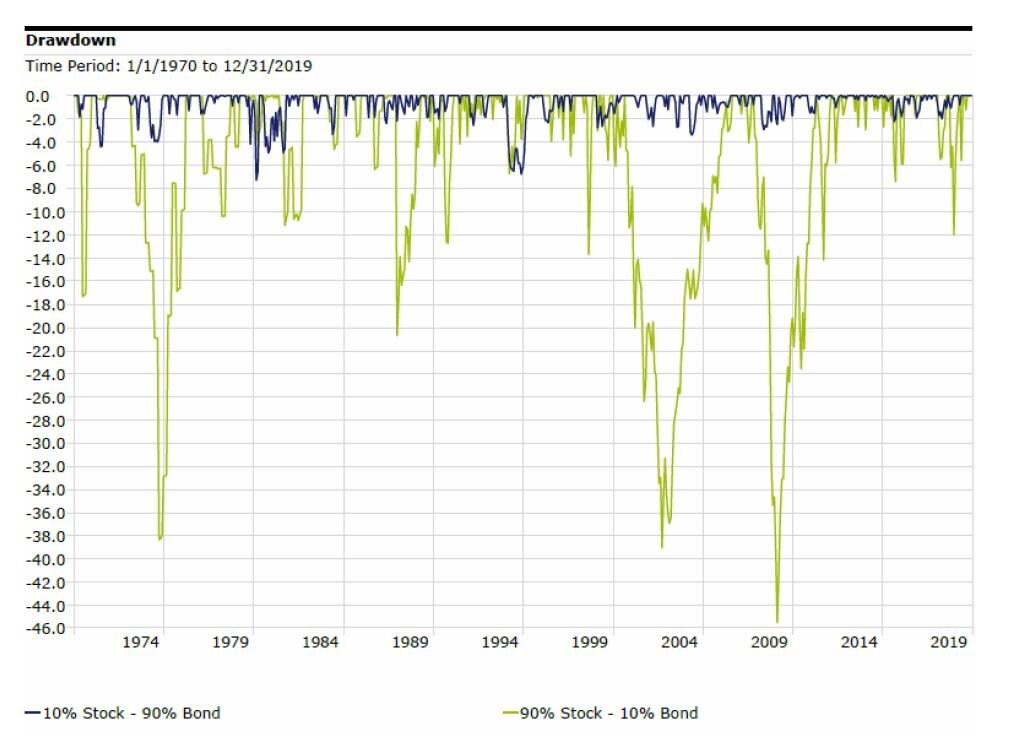 Contributed by: Angela Palacios, CFP®, AIF®
Contributed by: Angela Palacios, CFP®, AIF®
As the first quarter of 2020 comes to an end, COVID‐19 has brought the world together in an unusual way. We are now using strange new language like “social distancing” and “shelter in place”. Many of us are now meeting via Zoom (daily users of the videoconferencing platform skyrocketed from 10 million to 200 million). On the lighter side, #QuarantineMadeMeDoIt is trending on social media and we may be watching TV shows that weren’t worth our time before. Schools have been canceled in some states, forcing families to juggle their careers and childcare. Layoffs are a difficult reality for many at this time (luckily, not any Center employees due to smart planning!). We can only stay positive and hope that the drastic efforts to stop the spread of the coronavirus are effective. There is no doubt that COVID‐19 will make history books and there will be many lessons learned as we digest the far‐reaching consequences of this time.
How Did Markets Perform?
The spread of COVID‐19 began in China late last year and impacted their domestic markets, but not the global markets. As the virus spread globally, markets around the world reacted. With the virus came fear manifesting in many different ways, from hoarding toilet paper to hoarding cash. Investors were selling anything they could with a “sell first, ask questions later” mentality. The stock market saw wild swings that haven’t occurred since the 2008 recession. However, the current swings feel much worse because they happened over less time. The markets were generally either negative or positive in a large way each day with an average daily movement of 5% during March! The circuit breakers were triggered on 3 separate occasions, pausing trading for 15 minutes each time (this occurs when the S&P drops by 7% on any given trading day).
Here’s how various indexes closed the quarter:
Monetary Stimulus
The Federal Reserve (the Fed) responded first to COVID‐19 aiming to keep financial markets from spiraling out of control. While their actions could not prevent the economic downturn that is already upon us, the Fed could create more accommodative financial conditions that would help cushion the landing of a recession and support the economy’s eventual recovery. In the near term, the Fed’s actions have aimed to support smooth functioning in financial markets and ensure that the problems on Wall Street do not spill onto Main Street. Below is a timeline of their actions to help support the various functions of the financial markets.
Source: Performa, Federal Reserve
Take a look at the last point “What’s Next?” Well, the Magic 8‐Ball was correct. The Fed further expanded facilities to support municipal and high‐quality corporate bonds. They also purchased highly liquid fixed income exchange‐traded funds to further support the bond markets. These actions were straight from the toolkit developed through the financial crisis of 2008‐2009 (except for purchasing the exchange‐traded funds). Back then, it took the Fed nearly a year to deploy these actions. Thankfully, this year it was deployed in a matter of weeks.
Fiscal Stimulus
This accommodative policy from the Fed made it easier for large‐scale fiscal stimulus to be financed by cheap debt. The government responded with the CARES Act, a $2 Trillion stimulus package. It makes history as the largest stimulus package in the U.S. The goal is to inject a large amount of money into the economy to carry businesses and individuals through this hopefully short, but very challenging time. Learn more about the CARES Act here.
The rising national debt levels in the U.S. are a concern, however, there may be a reason to go into more debt. “If ever there is a time for the government to add to our debt, it is now,” says Kenneth Rogoff, a Harvard economist who often speaks on the risks of the spiraling national debt. He says, “We are in a war, the whole point of not relying on debt excessively in normal times is precisely to be able to use debt massively and without hesitation in situations like this”.
There is a risk of the national debt growing and burdening society in the years to come. This will be on our minds in the coming years. However, it is good to remember that our country’s debt burden, or interest, is a far smaller percentage of GDP than back in 1999. There are two reasons for this. Our GDP has grown since 1999 and interest rates the government pays on the debt are far lower. Think of how much more home you can afford when your mortgage interest rate is 2.7% instead of 6%.
Below is an excellent graphic displaying tools that have been used and what options remain.
An Oil War
Our eyes aren’t only on the coronavirus pandemic. An oil war was brewing between Russia and Saudi Arabia. We are in the midst of a price war because both countries did not agree on a response to a falling demand. They decided, instead, to flood the world with an abundance of cheap oil. This pushed oil prices to their lowest levels in 18 years (of course when gas is cheap, we can’t go anywhere!). More seriously though, couple this with people consuming less oil because of the pandemic keeping us home and this has spelled disaster for energy company stock prices. As I write this, the price war appears to be de‐escalating and there are talks of cutting production to support oil prices.
The Economic Fallout
Despite the unprecedented response from both the U.S. government and the Fed, the pandemic will surely leave its mark on the economy. Early data is being released and it is ugly. Manufacturing/service activity has drastically slowed and unemployment is on the rise.
However, ugly was expected by markets and much of the ugliness has been potentially priced in. We may see the equity market lows retested (or even go a bit lower) in the coming weeks before everyone gets back to work and the economy restarts. This will be highly dependent on flattening the coronavirus curve. If we see positive results from the stay‐at‐home orders and the virus infection rates slow, the markets could recover in the coming weeks and months even as the economy falls into a recession.
What Is The Center Doing In The Meantime?
Accounts have had higher than normal activity this year due to the volatile markets. After a strong 2019, our process called for rebalancing from stock to bonds to keep recommended asset allocations on target. We monitor to make sure any upcoming cash needs are set aside ahead of time. After the sharp drawdown in markets, for many, we have needed to rebalance from bonds back into stocks. We have been able to proactively tax-loss harvest for those who needed it and identify investment opportunities to take advantage of. For example, the Investment Committee is keeping an eye on U.S. Equities after reviewing the policy responses available to be deployed around the world. We feel the U.S. should be better positioned for recovery after the effects of the pandemic start to wear off.
In the Center’s 35 year history we have been through bear markets and surely will again after this. Bull markets follow bear markets and much of the recovery usually comes in the front end of the bull market and often well before the economy starts to recover. While we can’t predict when the next bull market will begin, your portfolio must be positioned properly for when that happens. It is important to stick to a thoughtful plan that was established during quieter/more rational times. Try to tune out the media and focus on your long‐term goals.
Thank you for the trust you place in us to manage your wealth and to advocate for your financial wellness. There could be no greater responsibility, especially during uncertain times. We strive to stay in touch and hope our communications via email, phone, and Zoom has been helpful. If you have questions or concerns please reach out to your planner! This is why we are here for you!
Angela Palacios, CFP®, AIF®, is a partner and Director of Investments at Center for Financial Planning, Inc.® She chairs The Center Investment Committee and pens a quarterly Investment Commentary.
There is no guarantee that these statements, opinions or forecasts provided herein will prove to be correct. This material is being provided for information purposes only. Past performance doesn't guarantee future results. Investing involves risk regardless of the strategy selected, including diversification and asset allocation. Holding investments for the long term does not insure a profitable outcome. You cannot invest directly in any index. The S&P 500 is an unmanaged index of 500 widely held stocks that are generally considered representative of the U.S. stock market. The Bloomberg Barclays US Aggregate Bond Index is a broad-based flagship benchmark that measures the investment grade, US dollar-denominated, fixed-rate taxable bond market. The Russell 2000 Index measures the performance of the 2,000 smallest companies in the Russell 3000 Index, which represent approximately 8% of the total market capitalization of the Russell 3000 Index. The MSCI EAFE (Europe, Australasia, and Far East) is a free float-adjusted market capitalization index that is designed to measure developed market equity performance, excluding the United States & Canada. The EAFE consists of the country indices of 22 developed nations. The MSCI Emerging Markets is designed to measure equity market performance in 25 emerging market indices. The index's three largest industries are materials, energy, and banks.


































